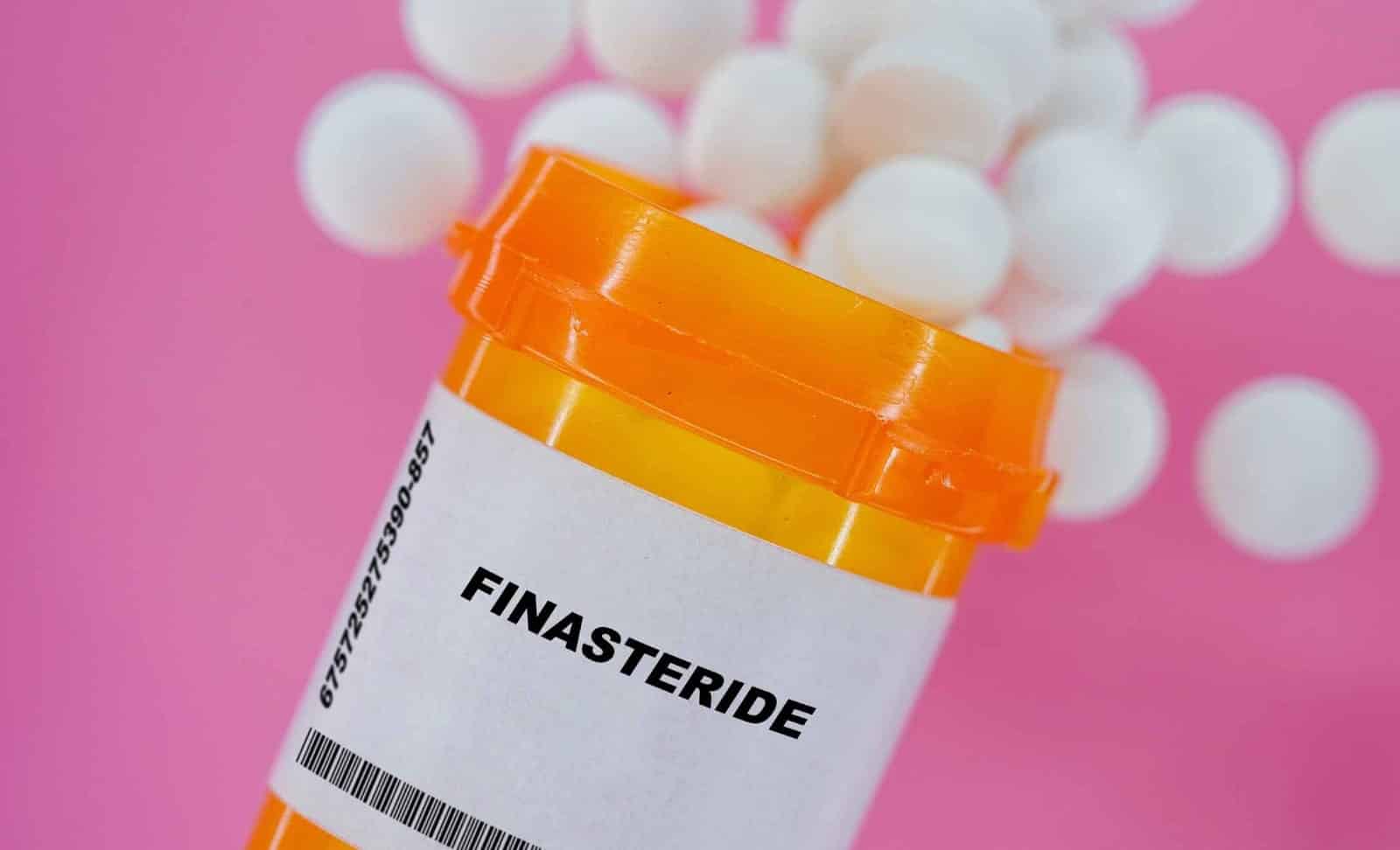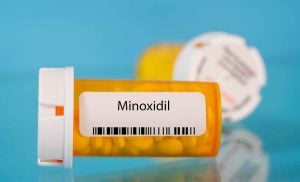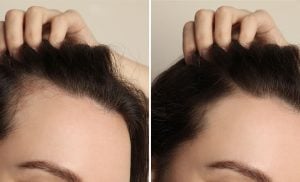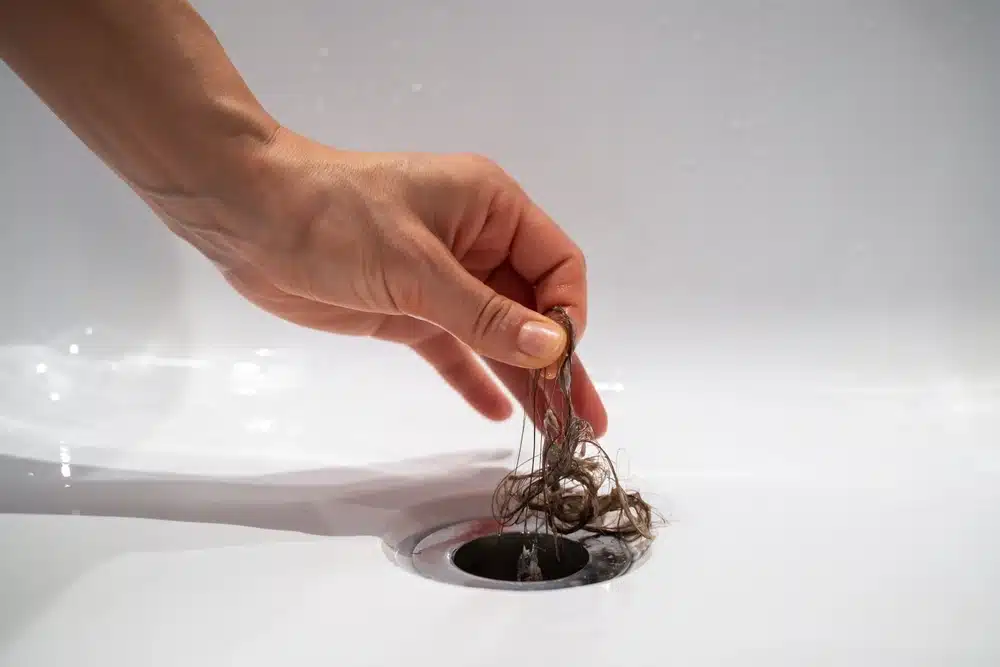Finasteride is an effective DHT-blocking medication that is only available via a prescription. Its main purpose is to treat prostate issues, but it can also be prescribed to men for treating male pattern baldness. It is not considered an effective medication for women.
- What is Finasteride? Finasteride is a medication used to treat enlarged prostates and works by blocking the hormone DHT (dihydrotestosterone). It can also be used to treat male hair loss.
- Can Women Take Finasteride? Women typically cannot take finasteride. It’s a prescription-only medication that is mostly prescribed to men, either for enlarged prostates or male pattern baldness.
- Why is Finasteride Only for Men? Finasteride is only for men because it specifically works by blocking a male hormone: DHT. This is what causes male pattern baldness.
- What Hair Loss Medications Can Women Take? Women can take the over-the-counter topical medical minoxidil, which works by stimulating blood flow to the scalp and encouraging healthier hair follicles. There are also hair-boosting multivitamins that could encourage healthier growth.
It’s unfortunately common for women to experience at least some type of hair loss at some point in their lives. It might look like a bit of thinning at the front of the hairline, or it might even result in entire bald patches thanks to female pattern baldness. Naturally, women going through this want a solution – preferably a non-invasive treatment with few side effects. When researching the answer to this, many stumble across the idea of taking finasteride for women.
What is Finasteride?
Finasteride is a medication in tablet form used to treat either benign prostatic hyperplasia or male pattern baldness. When taken for hair loss, this 5-alpha-reductase inhibitor blocks the excessive production of the hormone DHT, which is what often causes hair loss. It’s a medication usually taken once a day, and it requires continuous use for it to maintain its effectiveness.
How Effective is Finasteride?
Many men experience positive results after taking finasteride for hair loss. In fact, one study [1] showed that the efficacy rates in men after five years of treatment were 85.7%. As you can see, it’s a highly effective treatment, making it so popular among men. What about women, though?
Can Women Take Finasteride?
Finasteride for female hair loss is not currently approved. While men can get a private prescription for finasteride, women usually cannot – it’s only in the rarest of instances that a prescription may be given.
Why Can’t Women Take Finasteride?
Finasteride for women is not approved primarily because it is not effective. In one study [2], 137 postmenopausal women were given a 1mg dose of finasteride for an entire year (with some being given a placebo). To determine the outcome, scalp counts were taken and showed that there was no hair restoration after a year of treatment. If it doesn’t work, why would it be prescribed?
Why Doesn’t Finasteride for Women’s Hair Loss Work?
Finasteride doesn’t work well for women because it’s made to block the hormone DHT, which is much more common in men. DHT is an important hormone; it plays a key role in the sexual development of people assigned male at birth, including the production, growth, and composition of body hair. DHT mainly affects male pattern hair loss in adulthood. A man’s body can overproduce it as they age – finasteride prevents that.
The Side Effects of Women Taking Finasteride
Both men and women can experience adverse side effects after taking this medication. It makes even more sense that finasteride for hair loss in females wouldn’t be prescribed – not only does it not work, but it can also cause unpleasant effects. For women, these side effects include:
- A Reduced Libido
- Headaches
- Irregular Menstrual Cycle
- Dizziness
- Oedema
- Mastalgia (Breast Pain)
- Hypertrichosis
- Flushing
These adverse effects come from a study where women with female pattern hair loss took 5mg of finasteride [3]. It’s important to note that taking 1mg of finasteride might not produce as many adverse effects. It’s also worth mentioning that a lot of these symptoms lessened the more time went on, so the side effects don’t necessarily last forever, even when a woman continuously takes finasteride.
There are also certain finasteride side effects that are much more serious and need medical attention. If you experience a rash, a change to the breasts, hives, swelling, or difficulty breathing, call your doctor.
Can Pregnant Women Take Finasteride?
No. Finasteride is absolutely not to be taken by anyone who is pregnant, as it can cause birth defects. Women who are currently breastfeeding their children should also avoid taking finasteride as the hormonal imbalances can affect the baby.
Will Finasteride for Women Ever Work?
The likelihood is that finasteride won’t ever be a prescribed or recommended treatment for women experiencing hair loss. While finasteride might be a good treatment option for men, that doesn’t mean it will ever work for women. Still, studies are being done to see if that changes, so you can keep an eye on those.
What About Topical Finasteride?
In recent years, research into topical finasteride has shown some promising results. One study involving topical finasteride on both male and female patients showed positive results. Of course, more research needs to go into this potential treatment for female pattern hair loss before we know whether it’s a viable option to regrow hair.
Should You Take Finasteride?
If you’re a woman, it’s best that you don’t take finasteride. While you likely won’t experience any intense side effects, it would be a waste of time and money – you’re much better off looking at alternatives to finasteride to regrow your hair.
Of course, if you’re a man, that’s an entirely different story. Seeing as finasteride has excellent results for men, taking it after experiencing male pattern baldness is a sensible solution. You can get a private prescription for this (the NHS does not prescribe finasteride for hair loss).
Other Hair Loss Solutions for Women
Don’t lose hope – just because finasteride for women is a no-go, that doesn’t mean you have to deal with your hair thinning.
- Minoxidil
Minoxidil is a hair loss medication that has been approved for use for people with female pattern hair loss. It’s a topical treatment that needs to be used on the scalp daily and works by stimulating hair growth. Generally, it takes around four to six months for the results of minoxidil to show through, so you need to be patient when taking this medication. Also, much like finasteride, you must continuously take minoxidil for the effects to stay. People who stop taking it often find that their hair thins back to how it was before.
There’s also the option of using lower-dose oral minoxidil to treat female pattern baldness, with one study [6] showing that women tolerated this quite well. For women who don’t see results with topical minoxidil, this could be a good alternative.
- Hormone Therapy
Many older women (and some younger women) experience hair loss due to hormonal imbalances during menopause, and hormonal therapy can help with this [5]. That might include birth control pills, oestrogen, progesterone, or an antiandrogen medication.
- Improving Nutrition
A deficiency in certain vitamins and minerals can lead to hair loss. For example, women with lower iron levels often experience thinning hair. If you think your hair loss is caused by nutrition, it’s a good idea to get advice from your doctor, who will be able to run blood tests. A simple supplement or multivitamin might be enough to help you regrow your locks.
- A New Hairstyle
As mentioned, hair loss is prevalent in women – especially older women. Sometimes, the best way to deal with it is to switch up your hairstyle. Low pony hairstyles and choppy-haired bobs work excellently for this. You might also want to invest in products that make your hair appear thicker, such as volumizing sprays and hair fibres.
- Hair Transplants
When people think of hair transplants, they usually imagine a male patient. That makes sense, considering hair transplants are very common in men, and men typically experience more hair loss than women. That doesn’t mean women can’t get hair transplants – in fact, many women with balding or thinning hair experience excellent results from this procedure, especially as it’s a lifelong solution (compared to minoxidil, which you’ll have to take forever).
Should You Get a Hair Transplant?
A female hair transplant can be a fantastic route for women experiencing hair loss. Of course, it’s something you need to think about carefully – it’s a surgical procedure, after all. One thing to keep in mind is just how effective and safe hair transplants are nowadays. They have come a long way since the age of hair plugs, with the FUE hair transplant now offering natural results. It might take over twelve months to see the full results, but the longevity of the results makes it worth it for many women.
To be a good candidate for a female hair transplant, you should have a section of your hair that can act as a donor area – this will usually be at the back and the sides of your head. You should also be in relatively good health.
Finasteride: Not the Option for Women
As you can see, finasteride for women is not recommended, and you’d have a hard time getting a prescription for it. That makes sense, considering results show that the medication isn’t that effective for women. Luckily, other options, from minoxidil to hair transplants, can restore hair growth and give you back your confidence. The treatment option that works for you depends on your individual needs and expectations.
Interested in a Female Hair Transplant?
Here at Harley Street Hair Clinic, we have plenty of hair transplant options to meet the needs of all our patients. If you’re experiencing hair loss as a woman, we can help. We have a handy app that allows you to track your hair loss/growth and also book consultations with top surgeons. You can also speak directly to us via our contact page to get the ball rolling. When it comes to something as important as hair restoration, you need to trust the experts.
Sources:
- Evaluation of long-term efficacy of finasteride in Korean men with androgenetic alopecia using the basic and specific classification system
- Female pattern hair loss: A clinical, pathophysiologic, and therapeutic review
- Use of Finasteride in the Treatment of Men With Androgenetic Alopecia (Male Pattern Hair Loss)
- Adverse Effects with Finasteride 5 mg/day for Patterned Hair Loss in Premenopausal Women
- Topical finasteride for the treatment of male androgenetic alopecia and female pattern hair loss: a review of the current literature
- Uses, types, and effects of HRT





